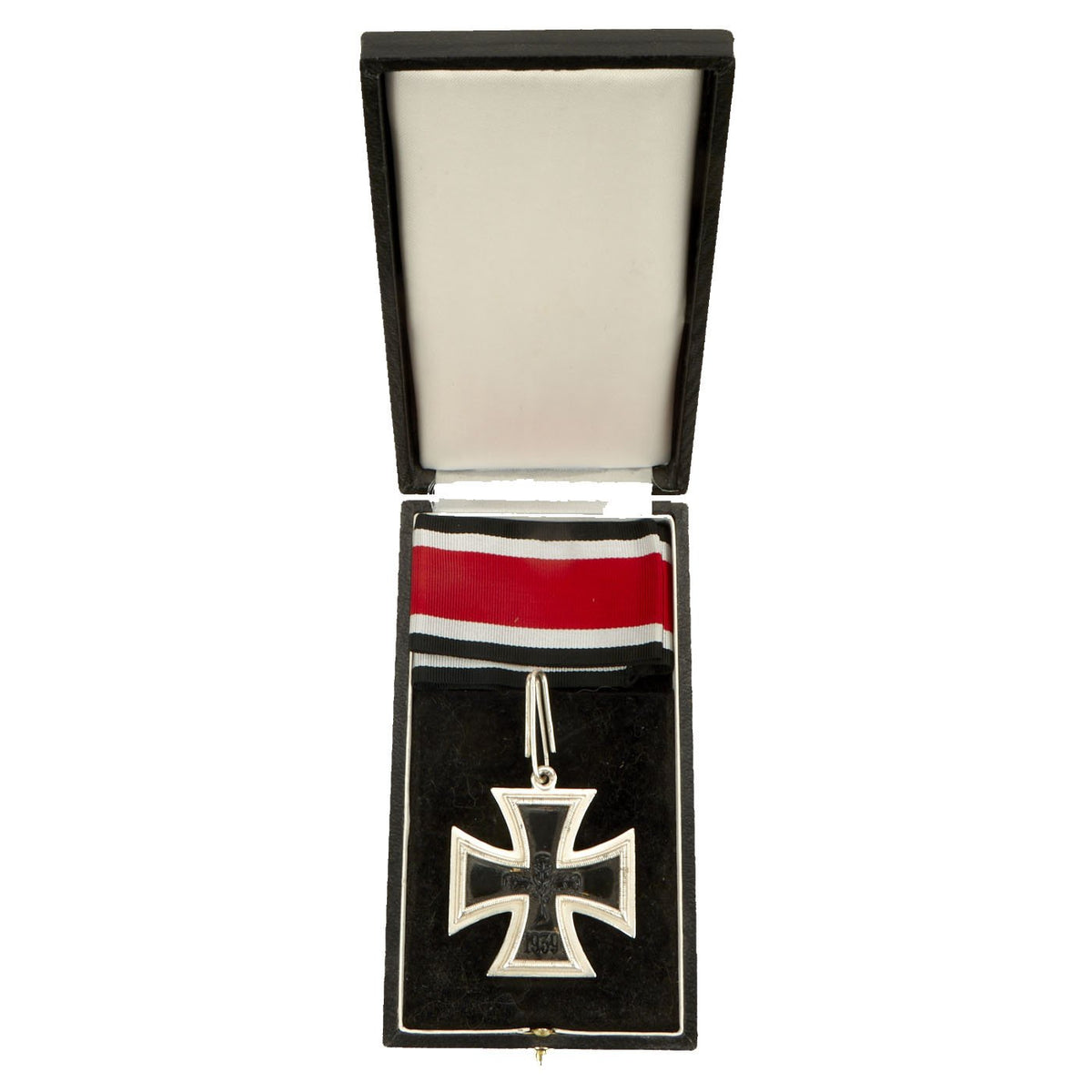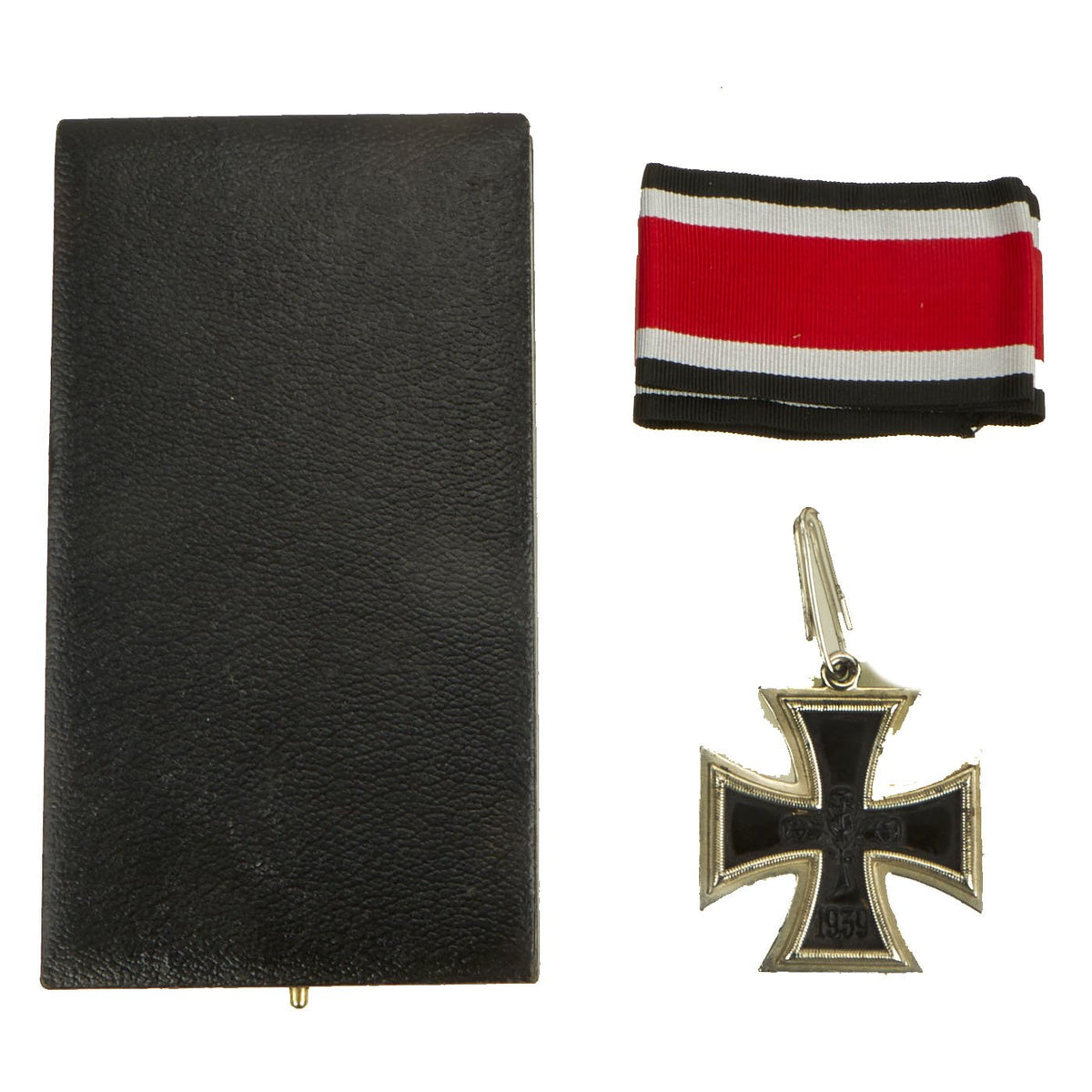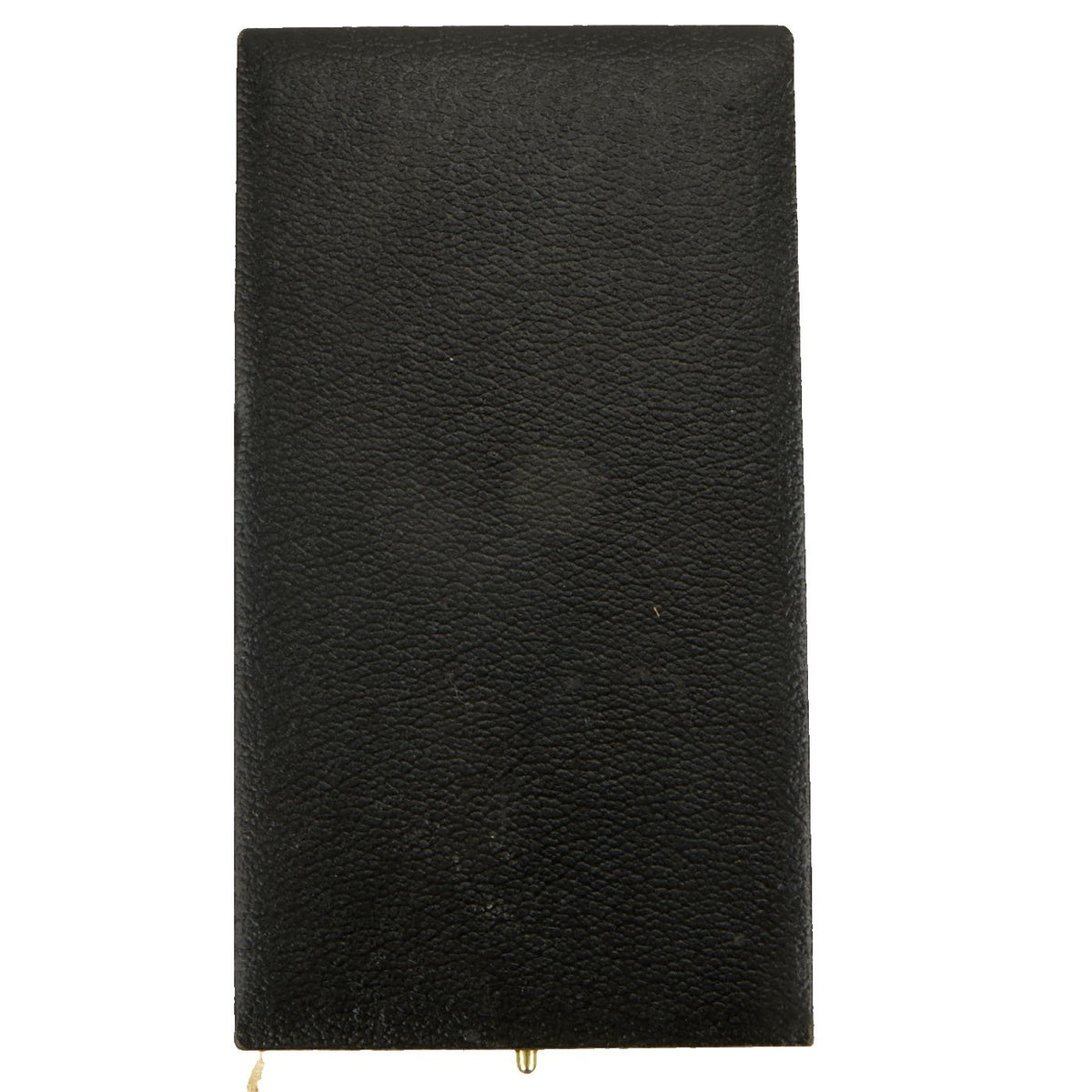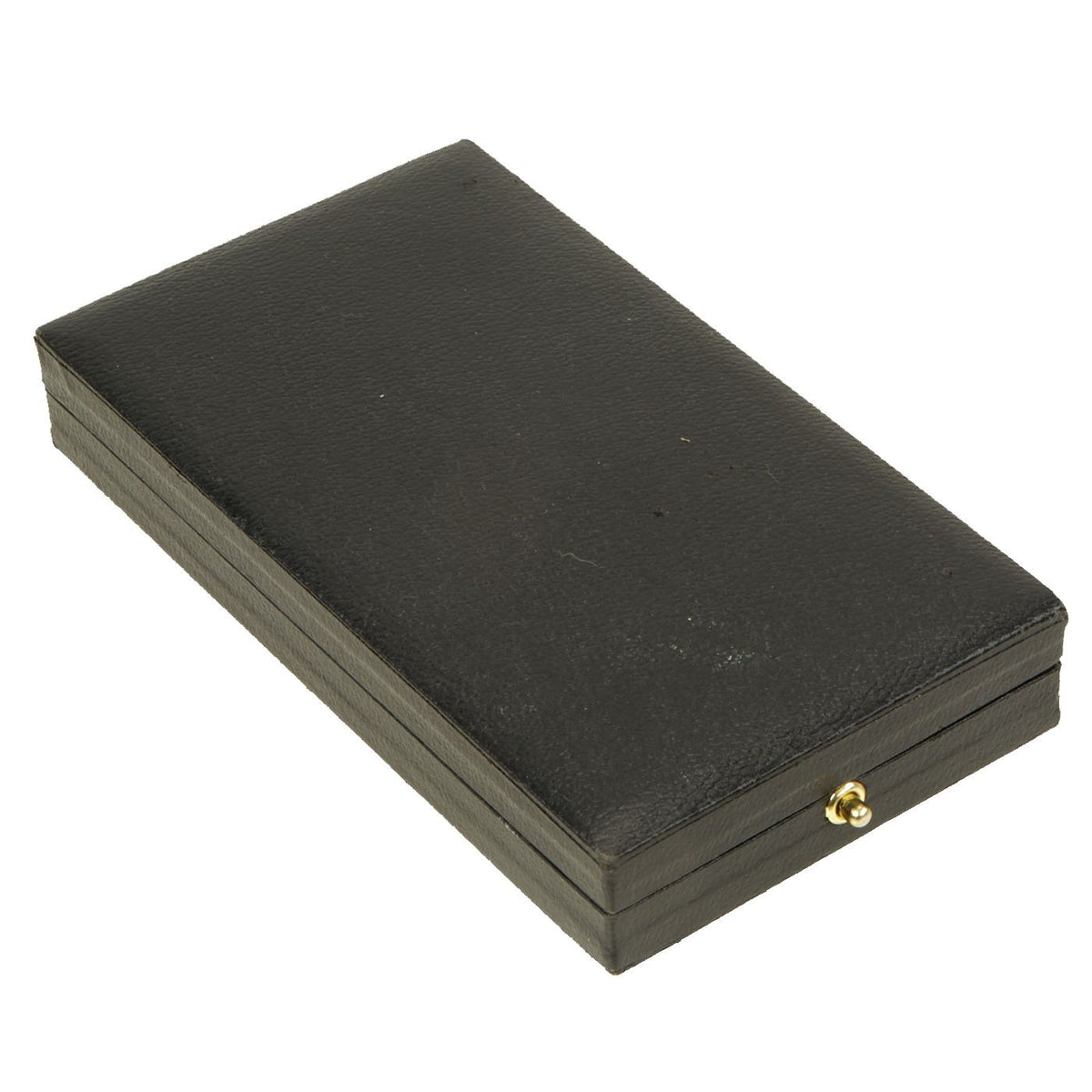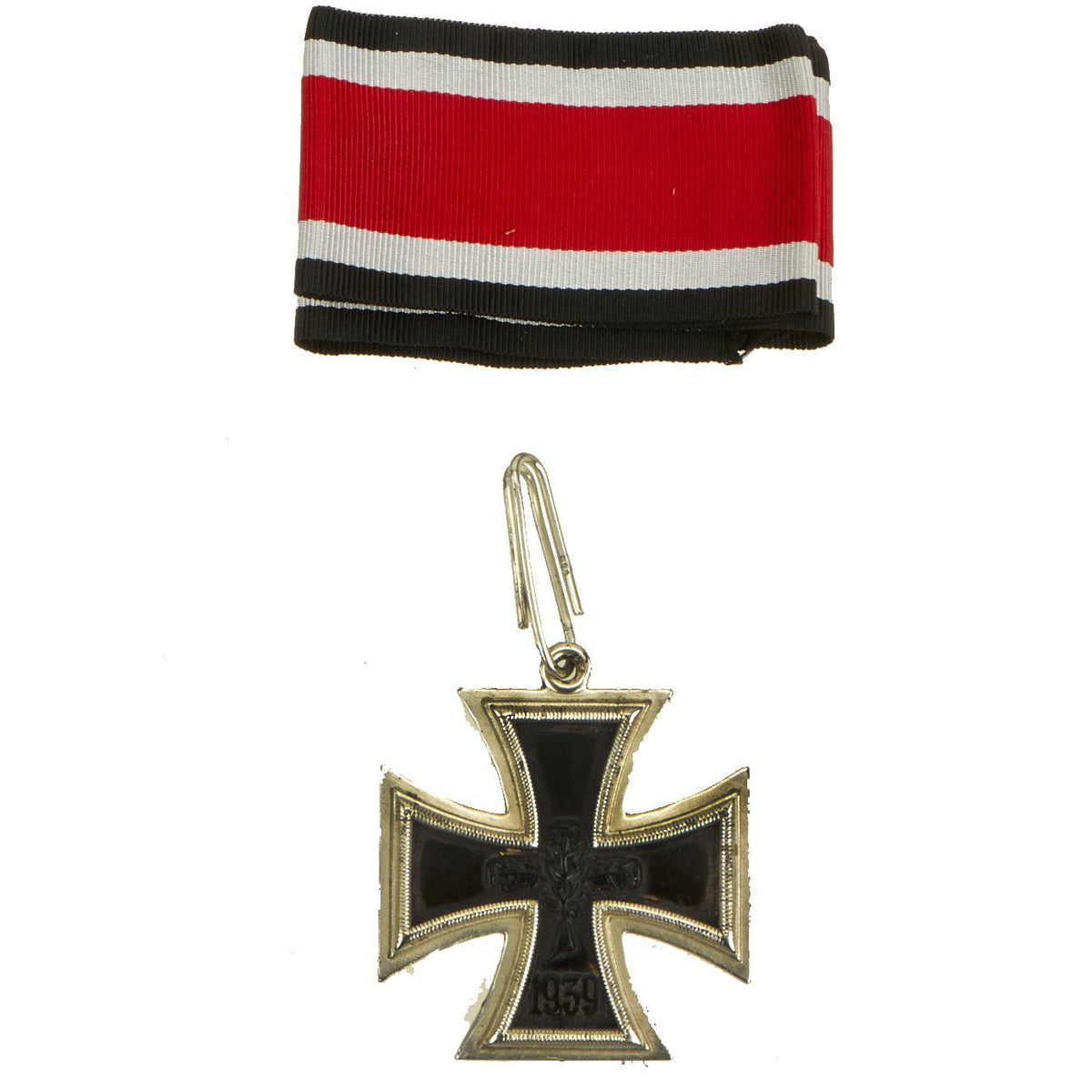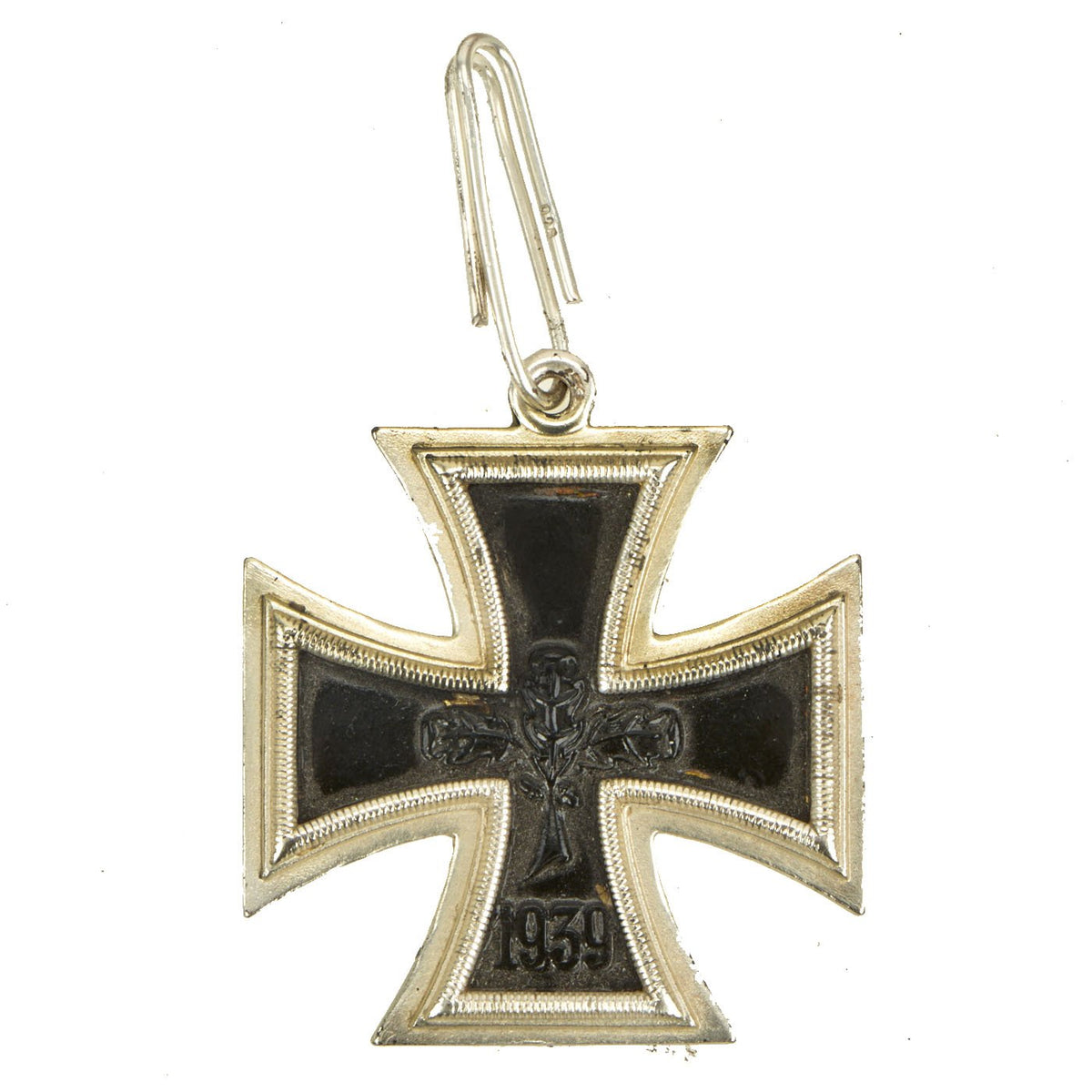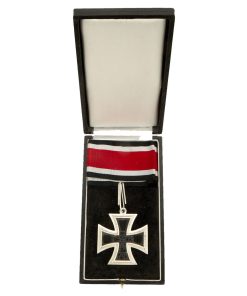Original 1990s German 1957 Pattern Knight’s Cross of the Iron Cross by S&L with Ribbon in Case Original Items
$ 595,00 $ 178,50
Original Item: Only One Available. This award is one of the most desirable of all German Awards, and is usually just called the Knight’s cross. After WWII was over however, many awards and medals were prohibited from display due to the NSDAP symbols they bore. The German Law about Titles, Orders and Honorary Signs (German language: Gesetz über Titel, Orden und Ehrenzeichen) regulated the wearing of the Knight’s Cross in post World War II Germany.
German law prohibits wearing a swas (hook cross), so on 26 July 1957 the West German government authorized replacement Knight’s Crosses with an Oak Leaf Cluster in place of the swas, similar to the Iron Cross of 1914, and the Iron Cross of 1957, which could be worn by World War II recipients.
This example was made in the 1990s, and is of the 5th grade, with no additional devices added. It is our understanding that these were made by Steinhauer & Lück. It is marked on the hanger ring with 800 (silver percentage). This example is in very good shape, and comes complete with the correct tri-color rayon ribbon.
If you were looking for a Knight’s Cross to add to your display, this may be it!
The Knight’s Cross of the Iron Cross (Ritterkreuz des Eisernen Kreuzes), or simply the Knight’s Cross (Ritterkreuz), and its variants were the highest awards in the military and paramilitary forces of NSDAP Germany during World War II.
The Knight’s Cross was awarded for a wide range of reasons and across all ranks, from a senior commander for skilled leadership of his troops in battle to a low-ranking soldier for a single act of military valor. Presentations were made to members of the three military branches of the Wehrmacht: the Heer (army), the Kriegsmarine (navy) and the Luftwaffe (air force), as well as the Waffen-SS, the Reichsarbeitsdienst (RAD—Reich Labor Service) and the Volkssturm (German national militia), along with personnel from other Axis powers.
The award was instituted on 1 September 1939, at the onset of the German invasion of Poland. A higher grade, the Oak Leaves to the Knight’s Cross, was instituted in 1940. In 1941, two higher grades of the Knight’s Cross with Oak Leaves were instituted: the Knight’s Cross with Oak Leaves and Swords and the Knight’s Cross with Oak Leaves, Swords and Diamonds. At the end of 1944 the final grade, the Knight’s Cross with Golden Oak Leaves, Swords and Diamonds, was created. Over 7,000 awards were made during the course of the war.
The Iron Cross (Eisernes Kreuz, abbreviated EK) was a military decoration in the Kingdom of Prussia, and later in the German Empire (1871–1918) and NSDAP Germany (1933–1945). It was established by King Friedrich Wilhelm III of Prussia in March 1813 backdated to the birthday of his late wife Queen Louise on 10 March 1813 during the Napoleonic Wars (EK 1813). Louise was the first person to receive this decoration (posthumous). The recommissioned Iron Cross was also awarded during the Franco-Prussian War (EK 1870), World War I (EK 1914), and World War II (EK 1939, re-introduced with a swas added in the center).
The Iron Cross was normally a military decoration only, though there were instances of it being awarded to civilians for performing military functions. Two examples of this were civilian test pilots Hanna Reitsch who was awarded the Iron Cross 2nd Class and 1st Class and Melitta Schenk Gräfin von Stauffenberg, who was awarded the Iron Cross 2nd Class, for their actions as pilots during World War II.
Fast Shipping with Professional Packaging
Thanks to our longstanding association with UPS FedEx DHL, and other major international carriers, we are able to provide a range of shipping options. Our warehouse staff is expertly trained and will wrap your products according to our exact and precise specifications. Prior to shipping, your goods will be thoroughly examined and securely secured. We ship to thousands clients each day across multiple countries. This shows how we're dedicated to be the largest retailer on the internet. Warehouses and distribution centres can be located throughout Europe as well as the USA.
Note: Orders with more than one item will be assigned a processing date depending on the item.
Before shipping before shipping, we'll conduct a thorough inspection of the items you have ordered. Today, the majority of orders will be delivered within 48 hours. The delivery time will be between 3-7 days.
Returns
The stock is dynamic and we cannot completely manage it because multiple stakeholders are involved, including our factory and warehouse. So the actual stock may alter at any time. It's possible that you may not receive your order once the order has been made.
Our policy is valid for a period of 30 days. If you don't receive the product within 30 days, we are not able to issue a refund or an exchange.
You can only return an item if it is unused and in the same state as the day you received it. You must have the item in its original packaging.
Related products
Uncategorized
Uncategorized
Uncategorized
Uncategorized
Uncategorized
Australian WWII Owen MK1 Machine Carbine SMG Custom Fabricated Replica with Sling Original Items
Uncategorized
Uncategorized
Uncategorized
Uncategorized
Uncategorized
Armored Burgonet Helmet & Polearm from Scottish Castle Leith Hall Circa 1700 Original Items
Uncategorized
Uncategorized
Uncategorized
Uncategorized
Uncategorized
Uncategorized
Armoured Fighting Vehicles of the World: AFVs of World War One (Hardcover Book) New Made Items
Uncategorized
Uncategorized
